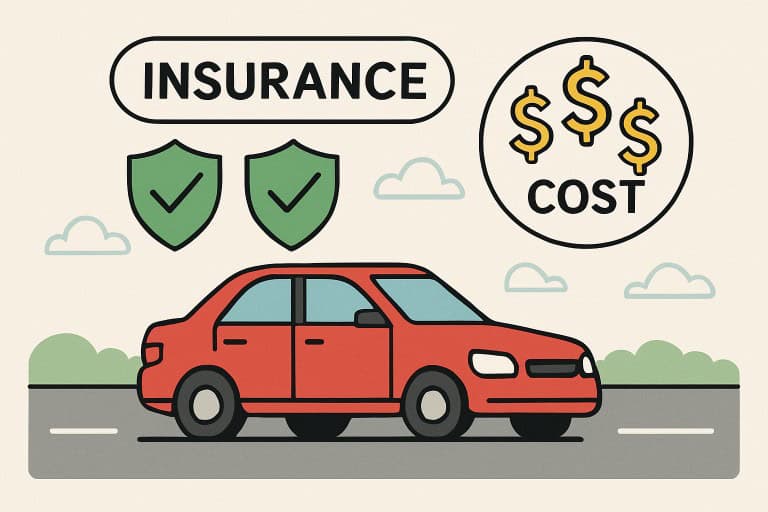Key Takeaways:
- Understand the key factors that determine car insurance premiums.
- Learn actionable strategies to minimize insurance costs.
- Stay current with industry trends and impactful legislative changes.
Understanding Car Insurance Premiums
Car insurance costs have become a major concern for drivers in recent years. Several critical factors play into how much you’ll pay for coverage—ranging from your driving record and the type of car you own to where you live and your past claim history. These variables not only affect your eligibility but also the rates on your auto insurance policy.
The landscape has seen a significant shift, with the average annual premium for full coverage surpassing $2,600 in 2025—a marked 12% increase since 2024. Contributing factors include economic inflation, repair costs driven by advanced vehicle technology, and a rise in claim frequency due to extreme weather and theft. For many drivers, understanding these influences is the first step towards finding savings in an evolving market.
The balance between insurance costs and quality is more delicate than ever before. As insurers adjust pricing models, understanding how your choices affect your premiums empowers you to make informed decisions for your financial security and day-to-day peace of mind.
Beyond the factors you can control, local and nationwide trends—such as new safety technologies or shifting risk pools—can also affect your rates. That’s why drivers benefit from a proactive approach, reviewing their policies and researching ways to reduce expenses whenever possible.
Property protection is also a key piece of personal financial security. It’s increasingly common for drivers to ask for guidance from home insurance brokers who are familiar with both auto and homeowners’ coverage options. Their expertise can help identify discounts and bundling options that further maximize savings.

Strategies to Lower Your Premiums
Even as premiums climb, drivers aren’t powerless. There are reliable tactics to bring insurance costs down without compromising coverage quality:
-
-
- Shop Around: Not all insurers evaluate risk in the same way or offer the same discounts. Receiving quotes from multiple providers allows drivers to compare offers and find the optimal policy for their needs and budget. Regularly reviewing your policy—especially at renewal—can uncover better pricing. According to Consumer Reports, customers who shop rates annually often save hundreds of dollars.
- Increase Your Deductible: If you’re confident in your ability to cover higher out-of-pocket costs during a claim, raising your deductible from $200 to $500 can translate to a 15-30% reduction in premium for collision and comprehensive coverage. Consider your risk tolerance before making this switch.
- Maintain a Good Credit Score: Most insurance companies use credit-based insurance scores to price policies (where allowed), meaning those with higher scores typically benefit from lower rates. Managing bills and minimizing credit usage are effective ways to enhance your score over time.
- Utilize Discounts: Beyond safe driving, discounts exist for students with good grades, policy bundling (such as combining auto and home policies), military service, and even low annual mileage. Always ask about available savings when purchasing or renewing insurance.
-
Telematics Programs and Their Impact
Technology is reshaping how insurers calculate premiums. Telematics devices—whether standalone or app-based—track windshield time, braking patterns, speed, and more. For drivers who demonstrate safe, defensive driving, these programs can result in substantial premium discounts. However, participation requires sharing significant driving data, raising privacy concerns. Balancing savings with comfort around data monitoring is a key consideration for many.
The Role of Legislative Changes
Legislative shifts are another factor modern drivers can’t afford to overlook. For example, in North Carolina, a recent law extended the surcharge period for new drivers from 3 to 8 years. It raised the minimum coverage limits on basic policies, which will, in many cases, significantly increase new-driver premiums. Such changes can be felt immediately in affected states, highlighting the need for all drivers to understand how local regulations can influence both what’s required—and what it costs—to stay compliant behind the wheel.
Staying Informed and Proactive
Keeping up with industry trends means regularly educating yourself on policy options and marketplace shifts. As both regulatory and market environments evolve, not all changes will be well-publicized, making it crucial for drivers to ask their insurers questions or consult knowledgeable brokers. Understanding the language of your policy, limits, and deductibles equips you to make better decisions, whether you’re renewing a policy or dealing with a claim.
Review your policy details regularly for accuracy and relevance, and stay alert to new discounts or incentives offered by insurance providers. Take advantage of online resources and consumer advocacy publications to stay up to date.
Conclusion
Modern drivers face a rapidly changing car insurance market, marked by rising premiums and frequent legislative adjustments. By understanding the key factors that drive costs, actively seeking discounts and adopting new technologies such as telematics, and staying updated on legal changes, consumers can take control of their insurance expenses. The most effective approach is proactive—review, research, and re-evaluate your options to secure reliable protection at the best possible price.



